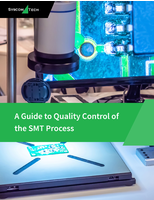Signal Conditioning Boards offer simultaneous sampling.
Press Release Summary:
To facilitate implementation of signal conditioning in DAQ systems, Expansion boards MSXB 064 and MSXB 065 eliminate alias frequencies from acquired data and can scale up for applications with hundreds of simultaneously sampled inputs. Products provide differential instrumentation amps with optional sample-and-hold circuits and jumper-selectable gains of 1, 5, and 25. Each board has 8 differential input and output channels on backplane connector.
Original Press Release:
Effective Signal Conditioning: Differential Instrumentation Amplifiers with Filtering and Simultaneous Sampling
Bellevue, WA, June 23, 2005 - Microstar Laboratories, Inc., maker of Data Acquisition Processor (DAP) boards, today announced signal-conditioning expansion boards for its DAP boards. These new expansion boards make it easy to implement signal conditioning in data acquisition systems. They can eliminate alias frequencies from acquired data and they can scale up for applications with hundreds of simultaneously sampled inputs at a very low cost per channel. The first two of a family of signal-conditioning expansion boards, part numbers MSXB 064 and MSXB 065, provide differential instrumentation amplifiers with optional sample-and-hold circuits and jumper-selectable gains of 1, 5, and 25. The MSXB 065 also includes fourth-order anti-alias filters. Future signal-conditioning expansion boards also will come in pairs: with and without built-in analog filters.
Spectral Analysis
Multichannel spectral analysis and other applications that acquire data from several channels simultaneously need products like the MSXB 064 and MSXB 065. Any application that requires accurate interchannel phase measurements - any application that computes transfer functions, for example - needs signal-conditioning expansion boards like these. These products eliminate the phase error that sequential sampling introduces.
Alias Errors
Sampling any signal introduces alias errors when the input contains energy at frequencies above half the sampling rate: the Nyquist frequency. Only analog filters can remove these frequencies. The MSXB 065 board includes a fourth-order lowpass filter on each channel to ensure that sampled data contains no alias errors.
Channel Architecture
The MSXB 064 and MSXB 065 boards slot into a backplane in a standard industrial enclosure like other products that conform to the channel architecture that Microstar Laboratories uses: signal connectors on 3U (100mm high) Eurocard B (220mm deep) boards - Eurocards - that often pre-process a signal. The new MSXB 064 and MSXB 065 boards each have eight differential input channels and eight differential outputs on a backplane connector. Conditioned signals pass through the backplane and an interface board and cable to a DAP board in a PC.
Different Daughterboards
On the MSXB 065, circuits on a daughterboard implement eight four-pole lowpass filters - one for each channel - before passing signals on to the simultaneous sampling circuits. Different daughterboards have different cutoff frequencies. Customers can choose from cutoff frequencies of 100Hz, 250Hz, 500Hz, 1kHz, 2.5kHz, 5kHz, 10kHz, 25kHz, and 50kHz.
Range of Filter Responses
DAPL, the onboard real-time operating system that controls every DAP board (and that the user controls through PC software like DAPstudio or LabVIEW from the PC), includes over a hundred data-acquisition specific commands-among them several built-in filtering commands. Applying these onboard digital filters to the output data from MSXB 065 boards produces a wide range of filtering responses, including very sharp lowpass filters.




